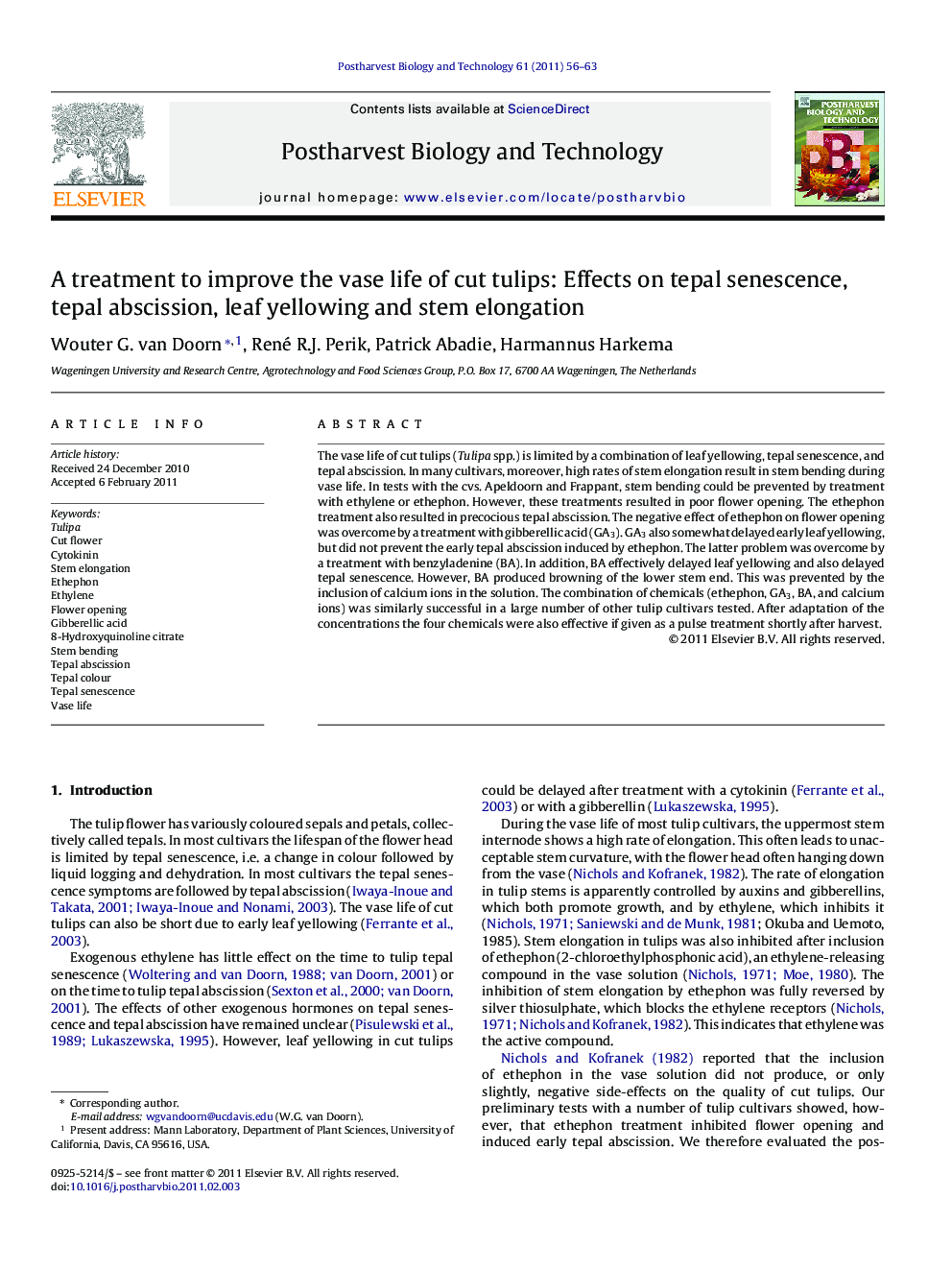| Article ID | Journal | Published Year | Pages | File Type |
|---|---|---|---|---|
| 4518807 | Postharvest Biology and Technology | 2011 | 8 Pages |
The vase life of cut tulips (Tulipa spp.) is limited by a combination of leaf yellowing, tepal senescence, and tepal abscission. In many cultivars, moreover, high rates of stem elongation result in stem bending during vase life. In tests with the cvs. Apeldoorn and Frappant, stem bending could be prevented by treatment with ethylene or ethephon. However, these treatments resulted in poor flower opening. The ethephon treatment also resulted in precocious tepal abscission. The negative effect of ethephon on flower opening was overcome by a treatment with gibberellic acid (GA3). GA3 also somewhat delayed early leaf yellowing, but did not prevent the early tepal abscission induced by ethephon. The latter problem was overcome by a treatment with benzyladenine (BA). In addition, BA effectively delayed leaf yellowing and also delayed tepal senescence. However, BA produced browning of the lower stem end. This was prevented by the inclusion of calcium ions in the solution. The combination of chemicals (ethephon, GA3, BA, and calcium ions) was similarly successful in a large number of other tulip cultivars tested. After adaptation of the concentrations the four chemicals were also effective if given as a pulse treatment shortly after harvest.
Research highlights► The vase life of tulips was studied using additions to the vase solution and pretreatments ► A combination of hormone treatments and calcium prevented early stem bending, early leaf yellowing, as well as early petal abscission and petal senescence, and resulted in proper floral bud opening ► It is concluded that the combined treatment is useful for improving the quality and extension of the vase life in most tulip cultivars studied.
